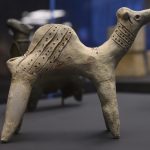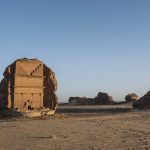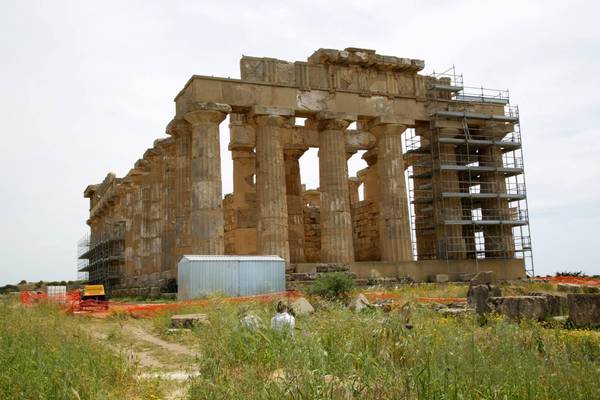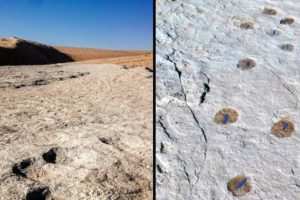
ANSQA/GIOVANNI FRANCO
Sites filled with historical vestiges, restoration almost done
PALERMO – Temples are ‘caged’ against the ravages of time by scaffolding in the 270-hectare Selinunte archaeological park near Trapani. The caves of Cusa are in the other 40 hectares.
Restoration work that began in May last year is supposed to be completed between June and July. The interventions underway were financed as part of the Po Fesr 2007/2013 program. For the restoration of the temples, overall financing of 2,271,735 euros was set aside. ”The works of the project ‘Doric architecture in the Greek West: pilot restoration interventions’ on Temples C and E,” park director Giovanni Leto Barone told ANSA, ”call for interventions with innovative materials of the surfaces seen and an improvement and securing of some of the structural parts.
About 90% of what was planned has been completed.” ”For the project ‘Houses for Men, Homes for Gods’ an overall 2,376,000 euros have been allocated,” Leto Barone added. ”The works, which aim to improve the use, are for the restoration of some parts of the internal walkways between the Acropolis and the Malophoros Sanctuary, and a revision of the signage. About 80% of the project has already been completed.” ”A ‘Theater for Selinunte’ will be built in the site with a 600-seat capacity in the area between the temple and the Baglio Florio, where the park museum is located, with 415,000 euros in financing. About 90% is completed, and some 2,849,950 euros will go towards the completion the Baglio Florio museum of Selinunte.
The work focused on the modernization of the electrical, anti-fire and air-conditioning systems, as well as the museum organization. About 80% has been completed,” he added.
The archaeological park is located at the mouth of a river where wild parsley (selinon) grows, which was the origin of the name of the waterway. The city was founded by Megara Hyblaea residents in Sicily in the seventh century BC near two port-canals, now sanded over, and engaged in intense maritime trade. ”It was due to this expert use of the geographical role of Selinunte,” historians say, ”that their inhabitants, in the space of just over two centuries, achieved an economic prosperity unrivaled in the Greek world or in that of Sicily/Magna Grecia.” A city of grandiose size was built with numerous places of worship and public works of high quality. Due to conflict between the Greeks and the Punics in the late fifth century BC, it lost its urban splendor, becoming an important Punic center of trade. Here the Greeks built four parallel temples close to each other in the southern zone for worship and other public activities. ”The position of the acropolis was extremely privileged due to its extension,” archaeologists say,” towards the sea, between the western and eastern coves. Its elevation over the sea was balanced and enabled easy monitoring of the two ports to it, linked by short and easy access.” Selinunte construction materials were excavated from the Cusa caves. They were in use from the sixth century BC until the defeat of the Greeks by the Carthaginians in 409 BC.
(by Giovanni Franco)















